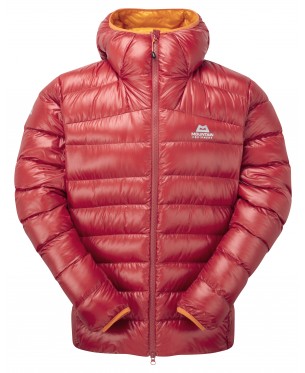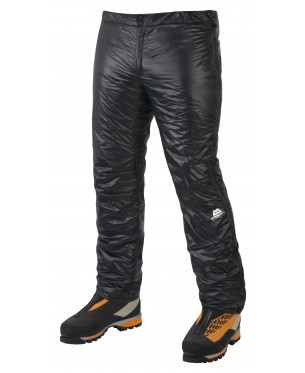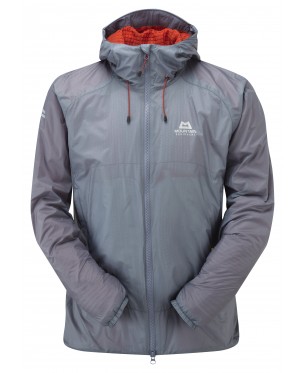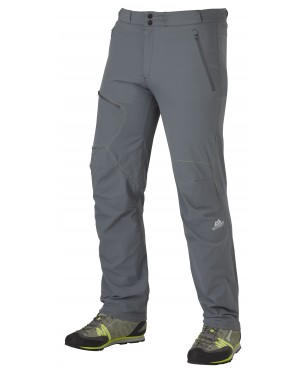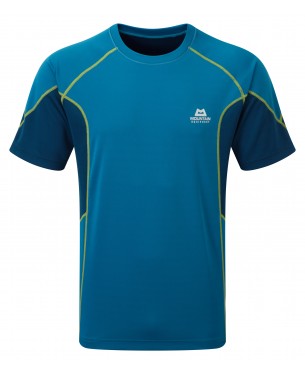Lessons: 20 - 27
Shiver bivi at the top of the Grand Pilier d'Angle. Photo: Uisdean Hawthorn
This is the fourth part in my ‘Lessons’ series. I wanted to share these light-hearted, tongue-in-cheek bits of knowledge.
I enjoy climbing in the mountains; I usually have a rich experience and plenty of adventure. The reward is usually much sweeter and lasts longer, too. Having said that, I’ve failed or bailed in the mountains many, many times!
Normally, when packing for a big alpine route, I have to spend hours thinking and weighing each item of clothing, considering it’s benefits and disadvantages. My decision is formed by the objective, the weather forecast, the current conditions and my partner. For example: will the route be done in a quick day or two? Is the forecast for ‘unseasonably cold’ weather? Is my partner psyched to go heavy or light?
I’ll admit to being a geek about kit; (I think most climbers secretly are). It can make a big difference to your enjoyment on a big route, and it has to be relied upon. As we know, fast and light is (usually) right.
The following information is mainly for my benefit: next time I won’t have to spend so long packing and stressing. I can just refer to this information. This has also been written without any incentive from sponsors; It’s just kit I highly rate and I’d like to share the knowledge gained from taking the right (and wrong) kit in the mountains over the years. Read it and make your own decisions.
High on DP, and climbing in the shade. Photo: Uisdean Hawthorn
'Skinny Alpine' aka Single Push/with a shiver bivi (in summer).
E.g. Divine Providence, Grand Pilier d'Angle, Mont Blanc.
Scroll down for 'Single Push without being a jessie.'
This is a ‘conservative’ single push style, which means you’re intending to climb the route in a single push, but you're going heavy. If you need to bivi you'll survive, rather than turbo shiver or biff it. For example, when we climbed DP we wanted to climb the route in a day but thought conditions on the upper half might be poor. We packed some warmer clothes 'just in case' and ended up spending the night at the top of the headwall due to high winds on the summit of Mont Blanc.
Perhaps the strategy 'heavy single push' is the difference between single push and not - by taking extra stuff you've got the option of biving, or you're almost guaranteed to go slower, and therefore will need to bivi!
NB. There have been some incredible achievements in the ‘single push’ style: Steve House, Mark Twight and Scott Backes climbing the Slovak Direct on Denali in 60 hours… Yes, they did it without ‘biviing’ but they did sleep for a few hours on occasions. Is this still classed as single push? I guess it does, because they didn’t take sleeping bags or bivi kit. There is no universal definition for ‘single push’ and it’s open to interpretation, but this was a very impressive achievement.
In summary
#20. Base layer top.
#21. Mid layer: Thin fleece.
#22. Trousers: soft shell
#23. Windproof
#24. Insulation: Down jacket (and/or synthetic trousers), gloves.
#25. Boots
#26. Bothy bag
This is a slightly lighter approach than described in my previous blog (Lessons 13 - 19; multi-day routes/winter alpine). As these types of routes will usually be climbed in summer, soft shell wins and you can also take a thinner down jacket.
For Divine Providence I used soft shell trousers and an insulated windproof as my climbing layers. When the headwall moved into shade I climbed in my down jacket, and when we bivied I put on my insulated trousers. Had we topped out on Mont Blanc at night, I would've been very grateful for the 'poof pants.'
This combination of regular/warm/bivi layers worked really well, and I felt comfortable most of the time.
I took the lightest boots I could (La Sportiva Trango Ice Cubes). I've previously been using a boot similar to the Batura for everything, which is bloody heavy for summer! It's a bit overkill. It felt nice to push the Trango boots into my pack, knowing they're a good deal lighter than traditional models. I didn't go even lighter because they tend to have a more flexible sole: not what you want for 600m of steep snow!
I regularly take a bothy bag in the mountains - it's turned a potentially serious situation into something only mildly uncomfortable. Don't underestimate the importance of shelter in the mountains.
Example Kit:
Mountain Equipment
Base Layer: Matrix 190
Mid Layer: Eclipse Hooded Zip Tee
Trousers: G2 Ultimate soft-shell Pants
Windproof: Kinesis jacket
Insulation: Skyline jacket
Synthetic trousers: Compressor Pants
Gloves: Assault
La Sportiva boots: Trango Ice Cube
Note: Uisdean took the Squall soft shell jacket instead of the Kinesis. I wanted something with a tiny bit of extra insulation.
Approaching Le Dru in beautiful evening light. The downside of taking a tiny rucksack is everything hangs off it during the approach! Photo: Uisdean Hawthorn
Single Push (Summer)
E.g. American Direct on Les Dru
Gervasutti Pillar on Mont Blanc du Tacul
Long rock routes in the alpine environment; does it get any better? Yes, actually - but these routes are meant to be just 'fun.' Going light and fast is enjoyable, so get rid of all your clobber, take half the rack and start sprinting...
In Summary:
Base Layer: short sleeved t-shirt
Trousers: lightweight climbing trousers
Mid layer: thin fleece
Mid layer 2: thin insulating jacket
Insulation: lightweight down jacket; gloves
(Optional: lightweight insulating trousers).
Bothy bag
Light boots/trainers(!)
I generally don't take a shell layer for these routes, as I'm not expecting any precipitation, hope to be climbing in the sunshine and can endure a shiver bivi for a few hours at the most.
This is an even lighter approach than the 'Single Push/with a shiver bivi' described above. I start the route with the intention of climbing it in a day (or bailing). That's important to note - if things aren't going to plan or you start late, you should really consider bailing. You're treading a fine line between adventure and epic!
Example Kit:
Mountain Equipment
Base Layer: Crux tee
Trousers: Comici trousers
Mid Layer: Eclipse Hooded Zip tee
Mid Layer 2: Switch jacket
Insulation: Arete Hooded jacket
Synthetic trousers: Compressor pants
Gloves: Assault
Boots: La Sportiva Trango Ice Cube
Uisdean seconding the 90m Corner on Les Dru.
